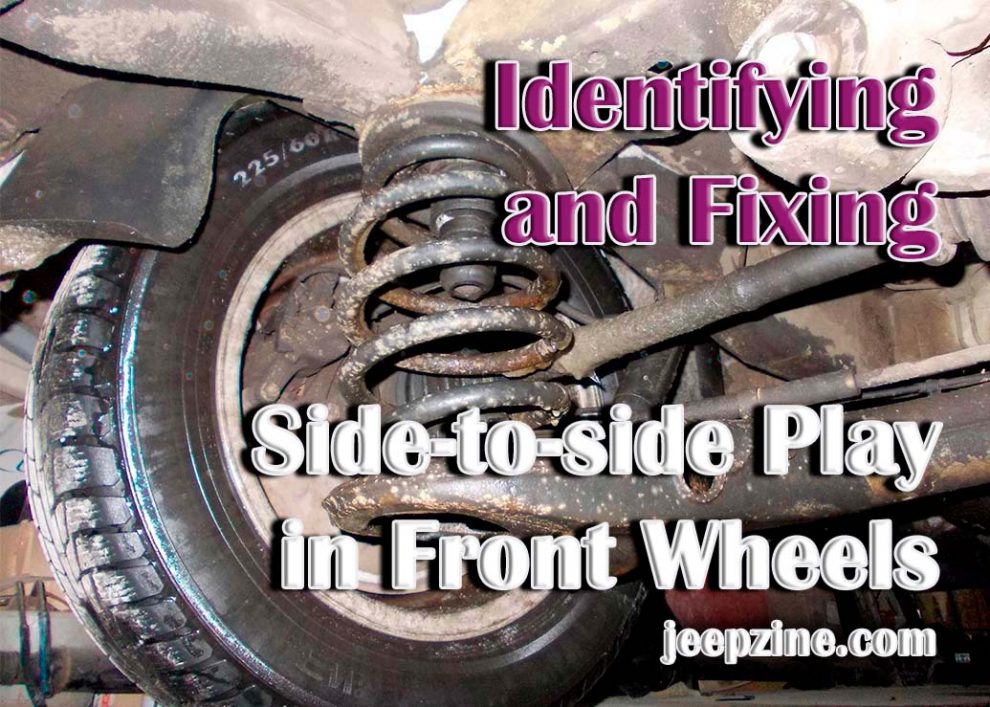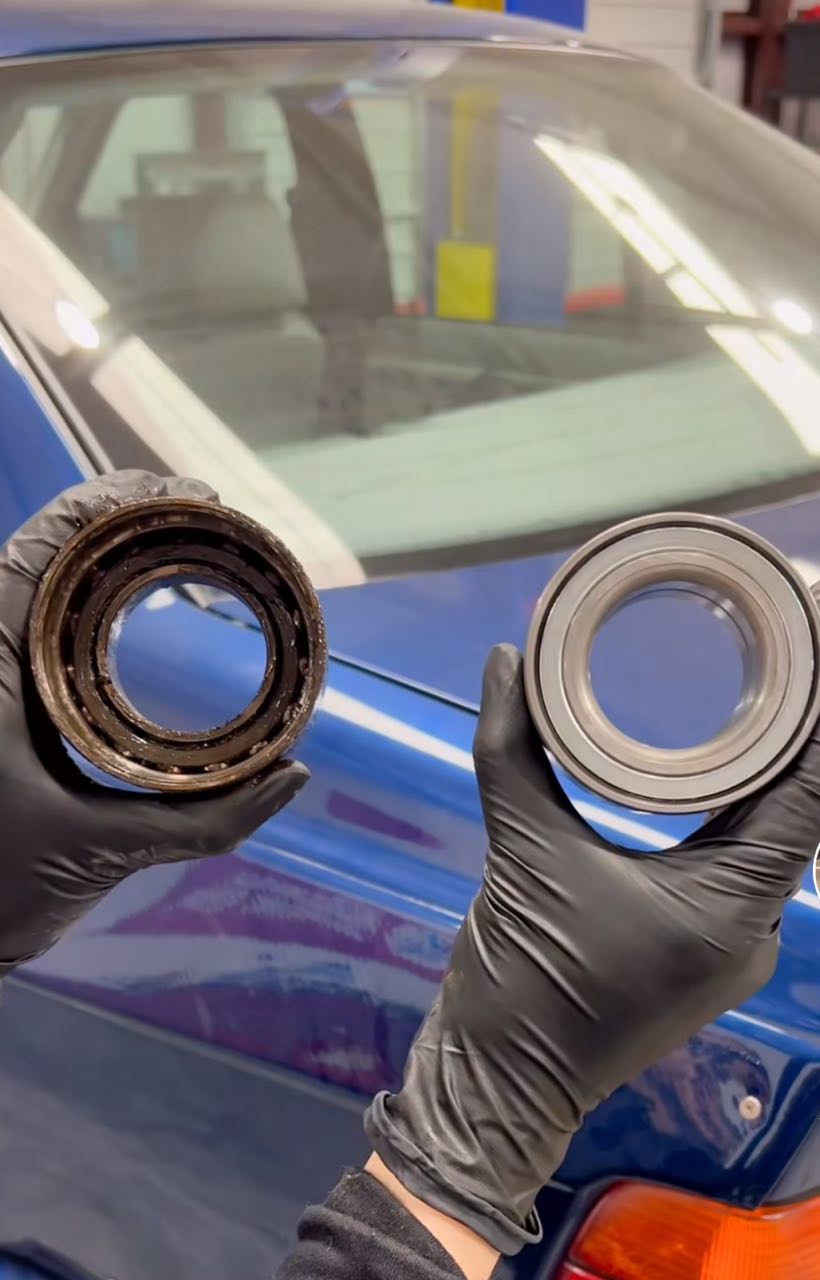A malfunctioning car can be annoying, but it’s not always a hopeless situation. Recognizing and addressing typical car issues when they emerge can save you both time and expensive repair costs. One of drivers’ most common issues is side-to-side play in front wheels. Luckily, this problem can be easy to fix. In this article, we will discuss the causes of side-to-side play in front wheels and provide detailed instructions on resolving them effectively. Whether you’re an experienced mechanic or just starting with basic automotive maintenance tasks, this guide will provide all the information necessary for removing side-to-side play in your front wheels so you can get back on the road confidently!
Symptoms of Side-to-side Play in Front Wheels
The most common symptom of side-to-side play in front wheels is excessive movement when the steering wheel is turned. As you turn the wheel to one side, the wheels may move more than they should before they start turning your vehicle in that direction. Additionally, when driving straight ahead, you may feel extra wobbling or shaking from your steering assembly as the movement from side to side increases friction between components.
Other signs of this issue include uneven tire wear on your front tires or difficulty maintaining alignment during turns. You may also notice a decrease in overall performance while driving at higher speeds due to reduced mechanical efficiency caused by increased lateral movement within your suspension system components. Lastly, you will likely hear loud noises coming from your steering assembly as it tries to keep up with changes in movement due to increased slack between components caused by worn bearings or bushings inside the system.
Causes of Side-to-side Play in Front Wheels
Side-to-side play in the front wheels is a common problem for many car drivers. Several factors, including worn-out steering components and suspension parts, improper wheel alignment, or loose wheel bearings, can cause this issue. Common causes of side-to-side play in front wheels include:
-
Defective Bearings: Faulty wheel bearings cause excessive play between the hub and the wheel by not providing enough stability and support for rotation. A damaged bearing or improper installation can cause this during maintenance.
-
Loose Lug Nuts: If lug nuts become loose over time due to vibrations from driving or incorrect torquing when initially installed, it will create slack in the wheel assembly, which could lead to lateral runout. To handle situations where the lug nuts cannot be tightened due to thread issues, also read ‘how to fix a stripped lug nut‘ for guidance on resolving this potentially dangerous scenario.
-
Misaligned Steering Components: Misalignment of components such as ball joints or tie rods will result in uneven contact, which can manifest as lateral runout. Improperly adjusted caster and camber settings are potential causes of misalignment, leading to side-to-side play in front wheels.
-
Suspension Damage: Damage to suspension components such as control arms, shocks/struts, leaf springs, etc., can cause instability, resulting in side-to-side play in front wheels due to lack of support for rotation under load conditions such as cornering or braking forces.
-
Worn Wheel Hubs/Spindles: Worn wheel hubs and spindles will limit the ability of the wheel to rotate in a smooth, consistent manner, which can result in lateral runout. It can be caused by general wear and tear or more serious problems such as collisions or other accidental damage.
Repairs for Front Wheel Play
Fixing side-to-side play in the front wheels of your vehicle can be done with a few simple steps. First, inspect the wheel bearings and lug nuts for wear or damage. If they appear in good condition, you can check the steering components and suspension parts for misalignment or damage. If any problems are detected, they need to be addressed before proceeding with additional repairs.
Next, check that all components are properly tightened and free of rust or corrosion. If any parts are loose or corroded, you should replace them with new ones. After all components have been inspected and cleared of potential problems, it’s time to adjust the wheel alignment settings according to manufacturer specifications to ensure proper steering response from your vehicle.
Finally, if their condition is beyond repairable limits, you may need to replace worn or damaged steering components, such as ball joints or tie rods. Once all repairs have been completed and double-checked for accuracy, you should test drive your car around a large open area at different speeds before returning it to regular use on the roadways.
Conclusion
Identifying and fixing side-to-side play in front wheels can be done with simple steps. Begin by inspecting the wheel bearings and lug nuts for wear or damage. Next, check steering components and suspension parts for misalignment or damage, as well as proper tightening and absence of corrosion. After all components have been inspected, adjust the wheel alignment settings according to manufacturer specifications. Finally, replace any worn or damaged steering components and test drive your car before returning it to regular use on the roadways. With these steps followed correctly, you will enjoy a smooth ride with minimal issues from side-to-side play in your front wheels!


 Defective Bearings: Faulty wheel bearings cause excessive play between the hub and the wheel by not providing enough stability and support for rotation. A damaged bearing or improper installation can cause this during maintenance.
Defective Bearings: Faulty wheel bearings cause excessive play between the hub and the wheel by not providing enough stability and support for rotation. A damaged bearing or improper installation can cause this during maintenance.